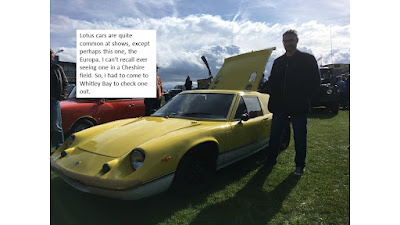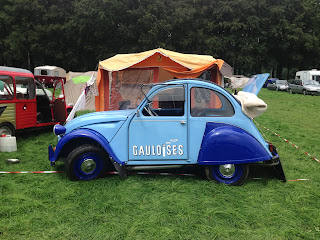I do hope you’re enjoying my exploitation of the UK’s celebratory days as muses to my car writing. I’m enjoying knitting these two ideas together however visible the join.
March offers a few opportunities for me to continue this most fragile of ideas. It would depend on your circumstances, which of these dates is most important to you. For some, Mother’s Day will be primary in March’s landmark days. And while I could do something with that, there are a couple of other opportunities I can utilise.
I’m talking first about St Patrick’s Day. You can be sure oceans of Guinness, and Irish whiskey will be consumed the world over as the Irish go into party mode. It's become a green-tinged, bacchanalian celebration of Ireland’s national day.
To a lesser degree, there’s also St David’s day. Is this event celebrated in such an exuberant fashion? Maybe in Welsh valley communities or long-defunct mining towns? It also implies something about the alcoholic consumption of these different races. But we won’t explore that theme you’ll be happy to know.
There is a motoring related angle here, and it’s a good one too. What cars have these proud nations produced and offered to the world? Are there any world-beating motors created by these patriotic peoples?
Well, there are some. These include mainstream masterpieces and others that have faded in the memory. So, with a daffodil in your lapel and a shamrock in your cap, let’s pour a pint of the black stuff and have a look-see.
Let’s start with Ireland. We’ll include the whole place, north and south if that’s OK. Yet like the leaves on a bog-standard Clover, only three cars are worthy of note.
Behold the 1955 Shamrock. Even the name gives the game away, to be sure. The ‘Irish T-Bird’ was the brainchild of William K Curtis and James Conway. They designed it to appeal to the US market. And what a beast it was. An ungainly log of a thing, it bore all the features of fifties Yank cars. Replete with chrome garnish, tail fins and, of course egregiously long.
Unfortunately, it was ludicrously proportioned and shocking in design. Its fibreglass body wobbled on Austin A55 running gear. It was a mess. It looked like the disquieting offspring of a Reliant Regal’s one night stand with a Cadillac. One particularly ungainly feature was that to change a rear tire you needed to unbolt the back axle. Convenient not! Even the luck of the Irish couldn’t make it a success with only eight built.
Then there’s the TMC Costin. A road-going sports car with a Ford engine, designed by racing driver Frank Costin. Launched in 1983 with a build schedule of ten per year planned. Unusually for a track-day car, it had usable luggage space and two rear-facing child seats.
You could go for a blast around your local track and then pop off with the wife and kids for a lovely weekend break. Your children watching as the track fades into view and always knowing exactly where they’ve been. But not where they’re going. A bit like TMC Costin unfortunately!
Alas, the cars were not a great success despite how innovative the design. Bankruptcy in 1987 arrived with only 39 cars built. The technology was licensed to US firm Panoz. They redesigned the body, dropped in a Mustang engine and called it the Panoz Roadster. Does that count as an Irish car legacy?
Finally, there’s the star of the show. It’s a car I’ve referenced several times, the story known to all with an interest in cars. The Delorean DMC12 was manufactured in Dunmurry, N. Ireland. Propped up by government funding until failure set it, it remains the one true Irish car that has a genuine legacy.
Derided at launch, it has undergone a renaissance in recent years. It’s now considered a flawed classic. As much for the associated legend as for the engineering. If you don’t know the story look it up, it’s a remarkable fable. What ’s more, the DMC12 is one car the Irish can claim as their very own and, to be fair, they can feel proud too.
So far, so Irish. But what about the Welsh? Well, they do have one car manufacturer they can reference. The Gilbern car company. An ungainly partnership between a German engineer and a Welsh butcher.
They launched the Gilbern GT in 1959. The engineering-based on BMC mechanicals starting again with the Austin A55. Later cars included the Genie and the Invader. All used engines from various British cars from the mainstream canon. Have a look at some pictures. These are good-looking cars. Outwardly, they looked purposeful; something you’d love to own and drive.
The company soldiered on under different owners until 1973. The final prototype was the astonishing T11 a beautiful wedge-shaped sports saloon. The only one built is on the showing circuit. Restored in 2009, it’s utterly unique, it’s a pity more weren't made. Hopefully, I’ll encounter it one day.
It goes without saying both the Irish and Welsh have a broader car culture than implied here. Both nations make significant contributions to car industry supply chains. Many excellent components are made in these countries.
The fact that they haven’t produced cars in volume is a shame. As we know, mass construction for the UK is largely centred in the West Midlands. Perhaps Ireland and Wales are just too far from the action.
More’s the pity though. As we have seen, when these nations have a go they make some interesting, some may say, challenging cars. As meagre as it is, it does constitute a legacy of sorts that I hope someone toasts on their national days.
If you’re celebrating, have a great day and, as ever, happy classic car motoring!





































